![]()
If you’re like most people, there was a time when cartoons were pure magic, when the characters and stories in Disney movies, Saturday morning cartoons, and even soda commercials were enthralling. If you’re like many others, your fascination with animated films and games stayed with you, growing more sophisticated but never going away. And if you’re like a select few, you picture a future involved in the magical yet challenging world of animation.
The animation profession brings together pure creativity, artistic craft, and technical know-how in a way that few other jobs do. Animators need to be artists, computer geeks, team players, independent thinkers. They must also have the patience to tirelessly complete the painstaking work of bringing still images to life, one frame at a time. If you have the passion, disposition, and skills required for an animation career, you’ll want to learn all the particulars about the industry and educational path. Our guide will introduce you to the field and explain what to expect from a degree in animation.
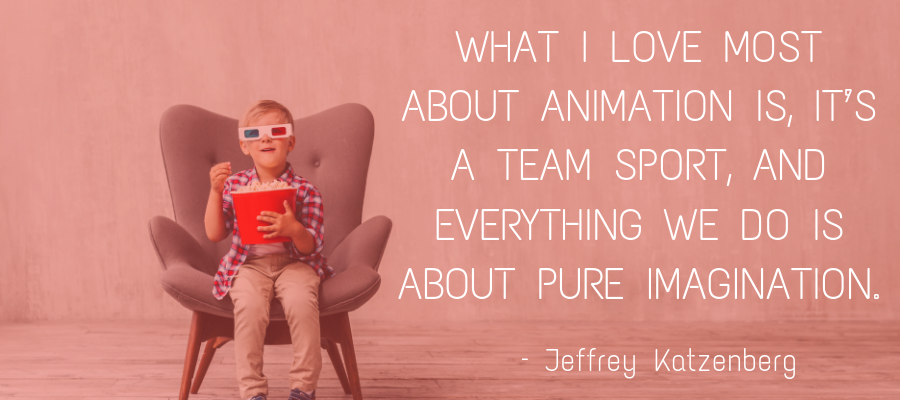
Jump To:
- What is Animation?
- How is Animation Different from VFX or Game Design?
- What Types of Animation Are There?
- What Classes Will I take for a Degree in Animation?
- What Software Will I Learn in an Animation Degree Program?
- What Can I do with a Degree in Animation?
- What is the Job Market with a Degree in Animation?
- What Jobs Can I Get with a Degree in Animation?
Looking for other resources on animation degrees? Check out the below:
[child_pages]
What is Animation?
Animation, simply put, is the process of turning static images into moving images by displaying them in rapid sequence. From a flipbook to a CGI feature film, all animation works on this principle, though the techniques for achieving it vary wildly. Some of the earliest animations date back to the early 1800, when artistic inventors began tinkering with optical devices that could make a series of images appear to move. The ability to use film for animation revolutionized the art form, and early cartoons like Fleisher Studio’s “Felix the Cat” and Walt Disney’s “Steamboat Willie” created a sensation which has only continued to grow. Today, the term animation is applied to anything from motion graphics in an app ad, to a stop motion arthouse short, to CGI special effects in a blockbuster movie.
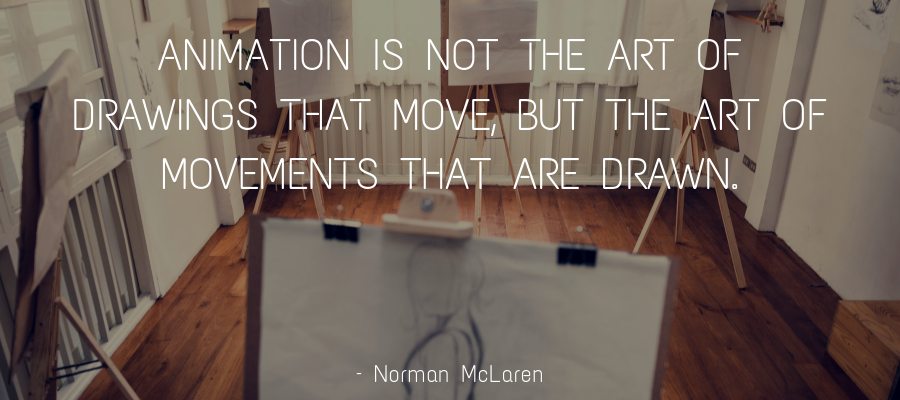
How is Animation Different from VFX or Game Design?
Like most contemporary animation, Game Design and VFX all exist in the world of CG, aka computer graphics. Web design and digital graphic design also rely on computer graphics. If you’re an artist working in the digital realm, you’re likely to interact with a little of each of these fields, and may even be considering a future in more than one of these areas. What sets each apart, and how do you know which is right for you?
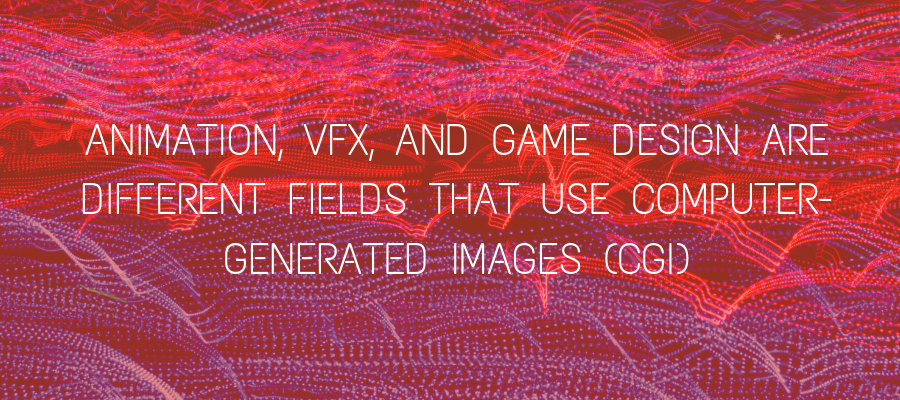
To start, it’s important to distinguish between Animation, Game Design, and VFX by understanding the definitions of each, and their differences.
Animation
As we’ve seen, animation is all about creating the illusion of movement. In today’s world of animation, that almost always means creating digital drawings or digital models and moving them in an environment. This can be a fully digital setting (as in an all-CGI movie like WALL-E) or a CGI character integrated into a real environment (as with the animated gecko in the Geico commercials).
VFX
VFX stands for Visual Effects, and refers to creating and manipulating digitally-created images in a a live-action shot in the process of film making. VFX can create the illusion of things that would be difficult, dangerous, or costly to film. Common VFX examples include actions like explosions, creatures like aliens, effects like manipulating an actor’s apparent age, or adding props like lightsabers to a scene. Types of VFX processes include modeling, motion capture, matte background paintings, special effects, and compositioning.
Game Design
Game design refers to the creative and production work involved in designing the characters, gameplay, and environment or video games. These can take the form of educational apps, home gaming system games, or Massively multiplayer online role-playing games (MMORPGs). Game designers are tasked with creating characters, settings, and movement patterns with user experience in mind- each must be attractive and engaging and must also function within the context of the game, balancing fun with challenge. In larger game production undertakings, game designers can have different roles, such as environment designer, game mechanics designer, or lead designer.
It’s easy to see that there’s quite a bit of overlap in terms of the skills needed to succeed in each of these fields. Creativity and technical expertise are key, and so is the ability to collaborate. That said, expertise in programming will generally be more important in the field of game design, which usually mixes 3D work with programming tasks. The software programs used for each field also have some overlap, but some programs are better suited to different industries. For instance, 3D Studio Max is used extensively in VFX, while Toon Boom Harmony is popular in 2D animation.
Fortunately for those who are uncertain about which area is the best fit for them, there’s a lot of flexibility between these types of computer l graphics work. In fact, many people who earn an animation degree go into game design or VFX, and some with degrees in game design or VFX go into animation. Overall, your interest in, say, games versus films will likely be the determining factor in which of these fields you choose to pursue.
What Types of Animation Are There?
Animation has come a long way since the days of Steamboat Willie, when Walt Disney debuted his iconic mouse in 1928. The first animations were drawn on separate sheets of paper held in place by pegs and individually photographed. As time passed, artists invented new ways to create and capture images, new ways to sequence them, and new ways to streamline the process. Today, computer-generated images dominate the world of feature films, while independent artists keep more handmade forms of animation alive. Many other animated films, shorts, and clips blend traditional and digital techniques. New forms can be expected to continue cropping up as the animation industry and art form keeps evolving. An animation degree program will introduce students to all the main types of animation, and usually allow them to focus their studies on one area of interest.
Traditional animation
Traditional animation is also known as cel animation or hand-drawn animation, and was used throughout the 20th century. In this process, individual images were drawn, traced, and painted onto sheets of acetate (“cels”), which were laid down over static painted backgrounds and photographed with a rostrum camera onto motion picture film. The images were shown one after another, usually at a speed of 12 frames per second, to create the illusion of movement. Today’s hand-drawn animation is created using a similar process, but images are usually drawn directly on a computer tablet (often a Wacom Cintiq) or scanned onto computers and animated using software. Many animators today use the term “tradigital” to describe this blending of traditional and digital animation techniques.

Examples of traditional animation features, including those supported by some computer animation, include:
- Bambi
- The Little Mermaid
- Spirited Away
- Akira
- The Secret of Kells
2D Vector-based animation
The term 2D animation can be used to describe traditional and tradigital animation, but is generally taken to mean vector-based animation. In this fully computer-based technique, designs are drawn using computer-defined vector shapes, which can be easily manipulated, don’t require large files, and can be interpolated (filled in) by computers. In addition to making individual drawings, animators in 2D can create rigs (digital models) for characters, and move the body parts individually. This allows them to show a sequence of poses without redrawing the character.
This labor-saving technique made it possible to thousands of independent artists to create and share Flash-based animated shorts to YouTube beginning in the late 90s. Flash is now owned by Adobe, and has been renamed Adobe Animate. This and other 2D animation programs continue to be used extensively by independent animators and small studios.
Examples of vector-based animation include:
- Homestar Runner
- The Simpsons
- Family Guy
- AdventureTime
3D computer animation
3D commuter animation, aka CGI, came to the world’s attention in 1995 with Toy Story, the first feature-length computer-animated movie, directed by John Lassetter. Since then, it has evolved to become capable of more and more realistic depictions of people, animals, creatures, and effects. It’s capable of depicting incredibly nuanced, detailed, and believable worlds and characters, whether realistic or fanciful, and is now the primary way animated feature-length movies are made. Today’s animation degree programs tend to focus on this in-demand area of animation.
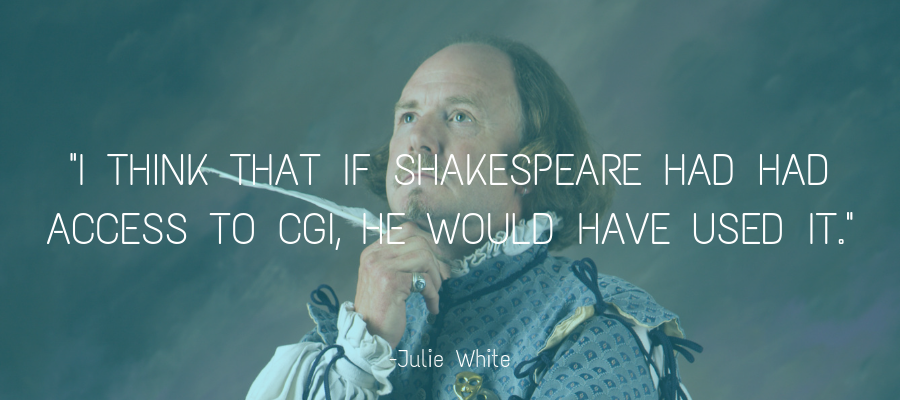
3D animation is fundamentally different from traditional or 2D animation methods. Instead of being based on drawings, CGI animation relies on models that are digitally “sculpted” in a computer program and fitted with a ‘skeleton’ that allows the animators to move and pose the models. Key poses are captured in a frame, and animated sequentially, just as in 2D animation. Animation software can interpolate (fill in the blanks by creating connecting poses) between these key frames to create a seamless movement. In some ways, animating in CGI is closer to creating and manipulating puppets than creating sequential drawings.
Examples of films featuring CGI include:
- Monsters Inc.
- Planet of the Apes
- The Lord of the Rings
- Bolt
- Star Wars Prequels
Motion graphics
Motion graphics is similar to both CGI and 2D vector animation, but takes place in a completely different context. Instead of being driven by characters or story, motion graphics is a non-narrative form of animation that’s applied to logos, text, and images. It can mean the animated swooshing shapes in the transition from field to sports desk during a sports game, the rotating logo in a commercial, animated demonstrative graphics in an explanatory video, or the opening titles in a feature film. Motion graphics doesn’t necessarily draw attention to itself. Instead, it draws the viewer’s attention to the details and information that the creator of a video wants viewers to notice.
Motion graphics grew out of video editing, which had long been a time-consuming (and therefore expensive) process. The development of programs like Apple Motion and Adobe After Effects made it possible for small productions to add animated sequences to what would otherwise be static elements like titles. Today, it’s a simple matter for even individuals and small businesses to add motion graphics to their sites and YouTube videos, while news programs and commercials have motion graphics that are sleeker and more seamless than ever.
As with other forms of animation, motion graphics requires an understanding of composition, camera motion, and design. Unlike traditional, 2D and CGI animation, though, knowledge of modeling and drawing isn’t essential. In this form of animation, a strong sense of graphic design is essential, including the ability to work with text and shapes in computer programs.
Examples of motion graphics can be seen in:
- News programs
- Sports broadcasts
- Movie titles
- TV commercial
- Mobile app ads
Stop motion
Stop motion is unique in the world of animation- it relies on the manipulation of three-dimensional physical objects. Stop motion has existed since 1887 (with the creation of The Humpty Dumpty Circus), but set the standard in Hollywood special effects for live-action films in the mid-century, with innovators like Ray Harryhausen, who created stop motion animation sequences in Jason and the Argonauts and Clash of the Titans.
Stop motion is created by photographing an object, moving it slightly, then taking another photo, and repeating the process to make a sequence of movements when played together. The process is identical to traditional animation, but relies on photographic real-world figures and environments instead of drawn ones. Like traditional animation, the process of creating a stop motion video is very time-consuming, as each object needs to be moved by mere fractions of an inch to capture each individual frame and create the illusion of a fluid movement.
There are several forms of stop motion animation, and well-known animated films featuring each. These include:
- Claymation (e.g. Wallace and Grommet)
- Puppets (e.g. Nightmare Before Christmas)
- Cut-outs (e.g. early South Park)
- Silhouettes (e.g.Tales of the Night)
- Action Figures (e.g. Robot Chicken)
Which area of animation should you pursue? This will depend on your interests and professional goals. Stop motion and hand-drawn animation are usually associated with more artsy, small-studio projects. That can mean high creative fulfillment but less lucrative work. TV and film use a lot of CGI, and specializing in one area of this branch of animation (e.g. modeling) can mean better professional prospects. Motion graphics is more commercial and less creative in terms of work, but is a great role if you’re looking for a well-paying a steady job.
What Classes Will I take for a Degree in Animation?
Animation degrees are offered as fine arts degrees, meaning you’ll be training for a professional future in the commercial or fine art world. That means you’ll be taking all art-related classes (as opposed to, say, humanities), and developing a portfolio throughout your program. An animation degree will typically provide a background in different animation forms, and will also allow students to focus on a particular area of interest through their choice of electives.
In order to be able to animate well, it’s essential to understand how to create an image that’s pleasing to the eye. Whether you spend your career animating logos or sculpting character models, you’ll need to understand how to effectively use color, balance shapes, and make forms visually understandable. An animation degree starts with these basics, with classes like:
- life drawing
- color theory
- principles of design
- drawing and building form
- sculpture
- media studies
After establishing a foundation in the visual medium and a general art sensibility, you’ll learn the ins and outs of animation. Classes will be very hands-on and project based, with many assignments based on real-world problems, such as designing a character to fit a description. Common course titles in an animation major include:
- animation preproduction
- story development
- character design
- Principles of 3-D Animation
- Concept Development
- animation production
- Digital Cel Animation
- motion graphics
- postproduction
- action analysis
In addition to studio-based classes, an animation degree typically includes some professional development courses that give students an introduction to navigating the field and work environment. Many animation degree programs include experiential learning, such as an internship or practicum working with production crews and animation teams. Animation is a competitive field where demonstrated know-how and teamwork are essential to success, and proving yourself at an animation internship even before you graduate can give you a big leg up in the field. Animation degree programs also help students develop a portfolio of mock-professional projects (such as animated commercials, characters, and logos) to demonstrate their skills to potential employers and clients. The biggest part of a student’s portfolio is usually completed as their final project, a single semester-long undertaking completed at the end of their studies that brings all their skills together in one animation project, such as a CGI short.
What Software Will I Learn in an Animation Degree Program?
Gone are the days when making a cartoon meant hand-drawing Mickey Mouse ten thousand times. Animation software has made the work of animation much easier in some ways and much more difficult in others. Software can automate many of the tasks that animators once had to do by hand, and makes it possible to create more lifelike environments, characters, and movements than ever. On the other hand, it’s essential for today’s animators to learn multiple complex animation software programs, and stay abreast of new ones as they are developed.
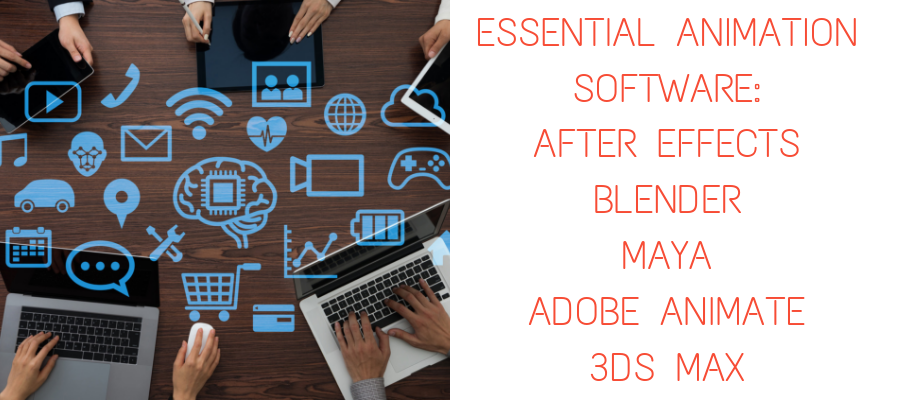
Animation degree programs provide basic training in some of the essential software programs used by animators in different areas of the industry. If your role requires more advanced expertise in a particular program, you may need to complete further training or simply gain practice to be able to use a particular software program at a professional level.
Some of today’s most popular professional level animation software programs include:
Toon Boom Harmony
Toon Boom is a great program for tradigital, vector, and some traditional animation. Toon Boom Harmony has a user-friendly toolset, including rigging systems, effects and camera tools.
Adobe Animate
The most popular of 2D animation programs, Adobe Animate started as Flash before being acquired by creative software giant, Adobe. This vector-based program has an intuitive interface and meshes well with Adobe’s other programs.
Adobe After Effects
Another Adobe product, this is an editing program which can be used for creating rigs for 2D animation or for motion graphics. Like Adobe Animate, it’s well-integrated with other Adobe products and intuitive to use.
Autodesk Maya
Maya is the go-to industry standard software for 3D animation, and can be found in most animation studios. It is very similar in user interface and function to 3DS Max, also owned by Autodesk.
Autodesk 3DS Max
3DS Max can be used for 3D modeling, rendering, animation, and compositing. Animators working in games, film, and motion graphics frequently make use of this robust tool.
Blender
Blender is a popular CGI software program that offers modeling, lighting, texturing, animation and post-processing functionality, along with interoperability and a small footprint. It’s price tag is as attractive as its features; Blender is free and open-source.
Cinema 4D
Cinema 4D is used heavily in the field of motion graphics, functioning as a 3D program for the After Effects user. Its versatility and intuitive interface make it a popular program, but it has limited applications outside the field of motion graphics.
Dragonframe
There are several low-cost beginner tools for stop motion, such as iStopMotion, but Dragonframe is the essential go-to for professional stop motion. Because of the physicality of stop motion, with its models and sets, mechanical devises for lighting and shooting are important, and Dragonframe can integrate with attachments like a device that controls the lights, camera, lights and focus on a scene.
What Can I do with a Degree in Animation?
A bachelor’s in animation is the preferred degree in the field, and most employers of animators require a bachelor’s in animation, game design, or graphic design. This four-year undergraduate degree provides a thorough training in the history, practice, tools, and profession of animation. A bachelor’s degree program also guides students in developing a portfolio of mock professional work, which can demonstrate technical skills for potential employers.
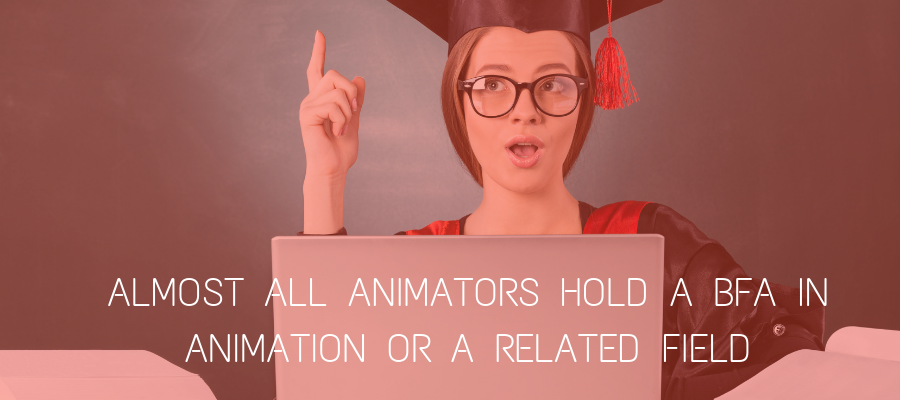
A bachelor’s in animation can lead you to a number of careers related to motion graphics. With a bachelor’s in animation, you could work in:
- studio animation
- game design
- web design
- VFX
Each of these fields has many areas of sub-specialty. For instance, in animation, some professionals work as storyboard artists, laying out scenes in shot by shot in panels, like a comic strip, to show how each will be framed. In game design, some professionals work as level designers, creating the appearance and layout of the different levels of a video game. In VFX, some professionals specialize in motion effects, capturing images of an actor’s movements through sensors and then mapping these onto animated three-dimensional characters.
Animation studios and other employers tend to look for job candidates with a strong portfolio, demonstrated technical skill, and expertise with relevant software programs. They also tend to hire, and advance, those who have shown excellent communication, teamwork, and time management.
What is the Job Market Can I Get with a Degree in Animation?
The Bureau of Labor Statistics projects that jobs in animation and multimedia arts will grow about 8% from 2016 to 2026, which is as fast as the average for all occupations. Consumers love the realism of CGI, and demand for those who can create digital animation and effects will remain robust. Jobs in animated graphics for mobile app are also expected to grow quickly.
Competition for these jobs will be high, though, as animation and game development are hot jobs that attract lots of driven and talented people. In fact, dice.com reports that video game designer is the nation’s hottest tech job. Companies are also increasingly sending some of the technical work in movies and animation overseas, where the cost of labor is lower. This means that having
How Much Can I Earn with an Animation Degree?
According to the Bureau of Labor Statistics, the average annual salary for Multimedia Artists and Animators is $72,520 per year. Those working in creative roles like character design tend to earn lower salaries, while those with leadership roles like animation director make higher salaries. Working in technical direction or on commercial films also leads to higher pay. The Bureau of Labor Statistics reports that software publishers earn $82,360 annually and animators in the motion picture and video industries earn $77,860.
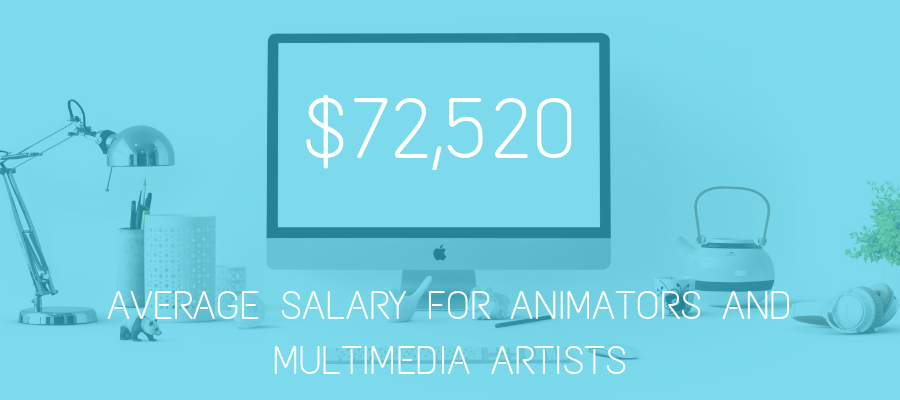
In looking at income, it’s important to also consider work environment. A full 59% of animators are freelancers, usually working on a contract basis for studios. This means a high degree of professional freedom, but at a considerable price; self-employed professionals usually miss out on benefits like IRA contributions and health insurance, and pay higher rates of income tax.
Further Reading:
- What Does an Animator Do?
- 23 Fastest Online Bachelor’s Degree Programs
- What Can I Do with a Bachelor’s Degree?
- 25 Best Online Bachelor’s Degrees for 2019
- What is the Median Salary for an Animator?
- What Can I Do with a Graphic Design Degree?
- What Industries Hire Graduates with a Degree in Graphic Design?
- What is the Benefit of a Degree in Environmental Science vs Environmental Design?
- What is the Benefit of a Master’s Degree vs a Bachelor’s Degree in Graphic Design?
- What Can I Do with an Art Degree?
- What is the Benefit of Having a Degree in Web Design?
- 50 Best Online Degrees for 2019
- Do I Need a Degree to Be an Interior Decorator?
- What Degree Do I Need to Become a Lighting Designer?
- What Degree Do I Need to Be a Forensic Artist?
